#mr. & mrs. smith (1941)
Photo


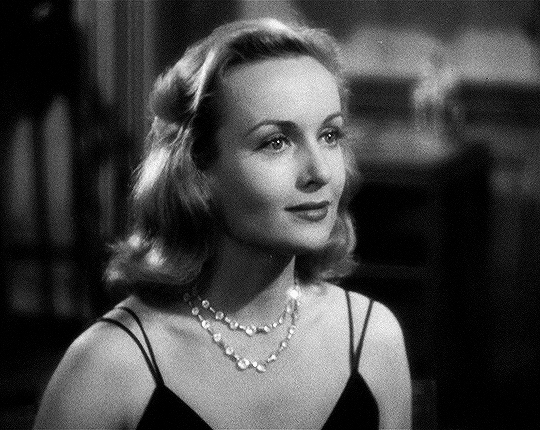


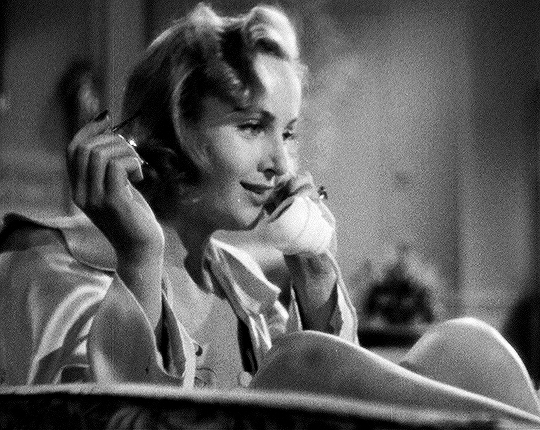
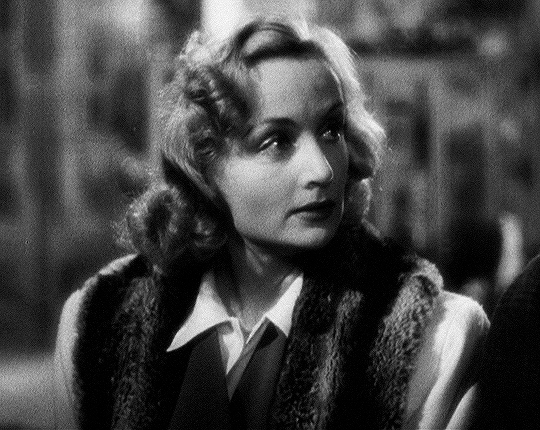
"If you had it all to do over again, would you still have married me?"
Carole Lombard in Mr. & Mrs. Smith (1941) dir. Alfred Hitchcock
#carole lombard#mr. and mrs. smith#alfred hitchcock#classicfilmedit#mr. & mrs. smith (1941)#oldhollywoodedit#filmedit#old hollywood#vintagedit#vintage#jp=2#*mrandmrsmith
468 notes
·
View notes
Photo
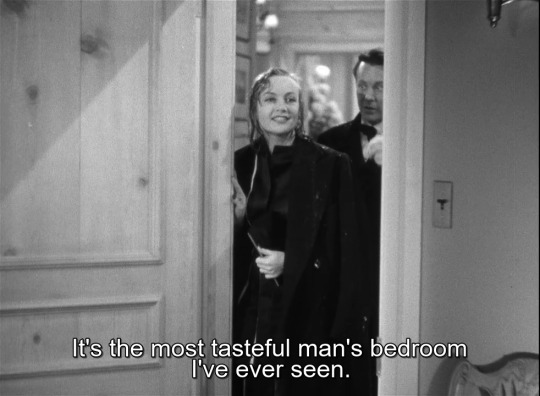
Carole Lombard in Mr. and Mrs. Smith (1941, Alfred Hitchcock)
18 notes
·
View notes
Text

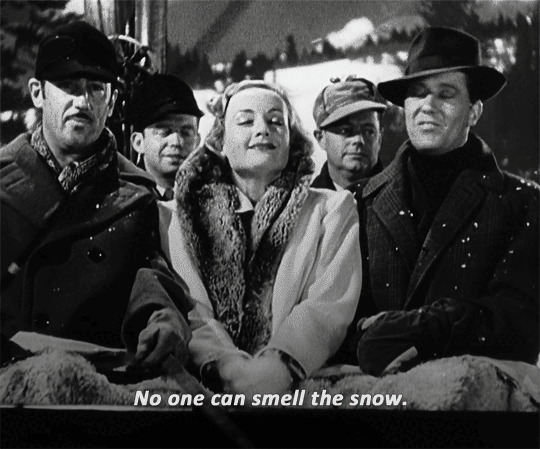


CAROLE LOMBARD in MR. & MRS. SMITH (1941)
#she is so pleased with herself in the last gif omg#i have loved none but carole#the only one who equals her in my heart is audrey but audrey (for better or worse...definitely for worse) belongs to the world#i feel like carole is mine 🩷#carole lombard#mr. and mrs. smith#the silver screen#marshmallow worlds#*
140 notes
·
View notes
Text
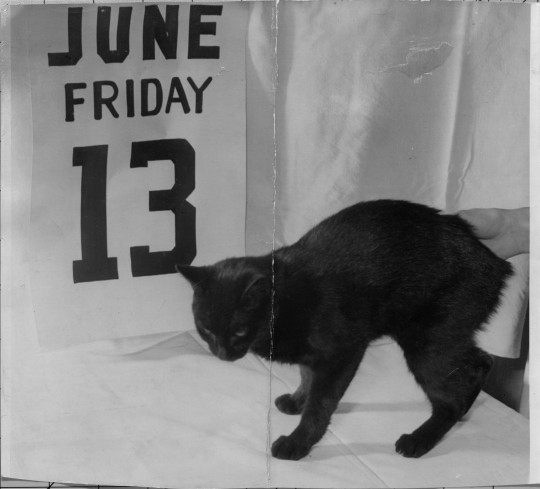
Black Bomber, a Manx cat belonging to Mrs. Charles Smith, poses in front of a calendar page for Friday the 13th (1941) via @hclib
#friday the 13th#minneapolis#minnesota#twin cities#history#travel#midwest#aesthetic#black cat#vintage
65 notes
·
View notes
Text
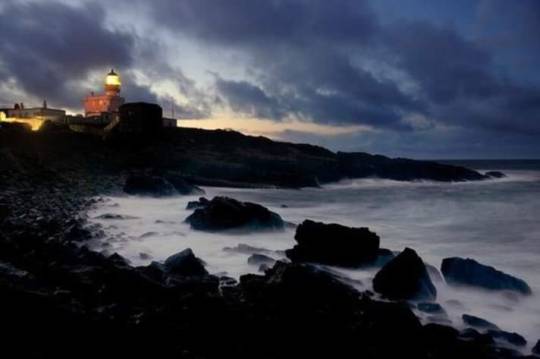


On December 1st 1787, the first modern lighthouse in Scotland was lit at Fraserburgh.
Made by Thomas Smith and Robert Stevenson at Kinnaird Head, the lighthouse was built on top of a 16th-century castle, and is now Scotland’s Lighthouse Museum.Kinnaird Head near Fraserburgh, built on an 16th Century castle, was the first lighthouse to be put into operation by the Commissioners of Northern Lights, and sustained the most powerful lamps of their time.
The lamps were 17 whale oil filled burners and were said to be visible from 14 miles away.The lighthouse was constructed by Thomas Smith and his son in law Robert Stevenson, grandfather of author Robert Louis Stevenson, with a lantern set at a 120 feet above the sea on a corner of Kinnaird Head Castle. Each oil-burning lamp was backed by a parabolic reflector and arranged in three horizontal lines to produce a powerful beam for seamen working some of the toughest waters in Europe.
Previously, coal fires had generally been used to guide sailors to safety. Mr James Park, a ship’s master, was appointed “Keeper of the light” at 1/- per night, The appointment was made on condition he had another person with him at the lighthouse every night, who he was to instruct in cleaning the lanterns and lighting the lamps. Whale oil was brought to Kinnaird Head by Smith, a tin smith of Broughty Ferry, which was a major whaling port of the day.
In 1824, a new lighthouse tower was built within the original castle tower with Robert Stevenson building a new lantern and reflector array.
In 1929, another first was recorded for Kinnaird Head when it took possession of a radio beacon. During WWI, enemy bombers struck the lighthouse only once despite repeated, heavy bombardments on the surrounding area due to Fraserburgh’s ammunition works. Records show that on 19 February 1941, two bombs from an aircraft exploded 50 yards from the Lighthouse Buildings. Damage included 41 panes of broken glass.
The Wine Tower at the lighthouse is the only surviving remnant of the old castle, and in fact is the oldest building in all Fraserburgh. Legend tells us that Isobel the daughter of Alexander Fraser, 8th laird of Philorth had fallen in love with a servant piper, and that the laird was not happy about this. So to separate the two the laird had the piper tied-up in the cave under the Wine Tower known as Selches Hole (Seals Hole). The laird then locked-up his daughter in the uppermost floor of the tower and retired to Kinnaird Castle.
Unfortunately for the servant there was an abnormally high tide due to a storm, and the poor man drowned. When Isobel the laird’s daughter was informed of her lover’s fate, she was distraught and committed suicide by jumping from the top of the tower onto the rocks below. The rock that she fell on is still painted red to this day. It is said that Isobel is seen prior to bad weather, and when the weather is bad it is said that you can hear the skirl of the pipes being played by the ghost of the piper for his lost love
35 notes
·
View notes
Photo

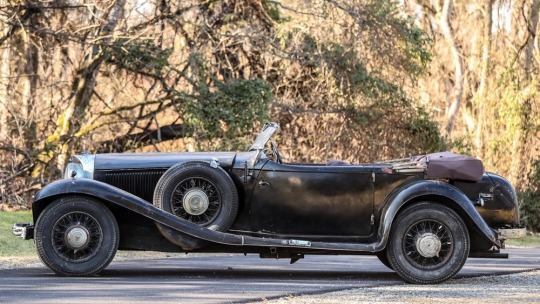


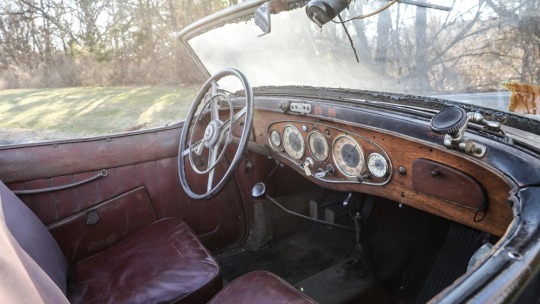


Unrestored 1934 Mercedes-Benz 500 K Offener Tourenwagen,
The name Offener Tourenwagen, or “open touring car,” in Mercedes-Benz parlance often brings to mind the vast and weighty 770 Ks of the late 1930s. On their sibling supercharged 500 K chassis, however, it referred to something entirely different: a very attractive two-door open model, with a rather low, subtly curving beltline, that recalled the powerful Sports 4 style of earlier K and S-type models. It was a very sporting automobile and one of the most masterful creations of the factory coachbuilders at Sindelfingen, who finished each body with the superb craftsmanship and quality materials for which they were renowned.
Chassis 105355, is one of only five surviving examples of this style on the 500 K chassis. According to its original Mercedes-Benz kommission sheet, a copy of which is on file, this car was originally delivered in late 1934 to Rudolf Hess of Berlin, one of the highest ranking members of the ruling National Socialist German Workers’ Party. Hess famously flew solo to Scotland in 1941 in a failed attempt to get the UK to exit the war. Instead, he was taken prisoner and convicted. To the victors, however, go the spoils: The 500 K was eventually commandeered at the end of WWII, and like so many of its brethren, wound up being used by American GI’s in Germany, then afterward came to the US.
As early as 1955, the car was in the ownership of V. Link Milsark of Vienna, West Virginia; a copy of a West Virginia title in his name, dated that year, is on file. Known to friends as “The Mayor of Rose Holler,” Mr. Milsark was an auto mechanic, aviator, model train collector, and a genuine character in every sense of the word. He is not known to have shown the 500 K in his decades of ownership but was nonetheless an enthusiastic owner, maintaining membership in and listing the car with the Classic Car Club of America for decades.
Mark Smith acquired the long-hidden Milsark 500 K in 2005 through what can only be described as one of his characteristic transactions, involving multiple cars and parties. He was undoubtedly pleased with the acquisition, which remained one of the great centerpieces of his collection ever after.
Retaining its original, numbers-matching chassis and engine per factory records, as well as the original typenschild on the firewall, the car remains startlingly original, never restored, and “improved” only as necessary over the years. Mr. Smith kept it much as he acquired it, with sensitivity towards preserving the condition in which it had been left by its long-term prior owner. At some point the bottoms of the front seats were replaced and covers were fit over the seat backs; the balance of the interior, including the door cards and rear seat, is that fitted at Sindelfingen in 1934. A 1955–1956 West Virginia DMV inspection sticker is even still intact on the windshield.
Mr. Smith exhibited his 500 K in the Prewar Preservation class at the Pebble Beach Concours d’Elegance® in 2006, and at the Amelia Island Concours d’Elegance in 2019, where it received an Amelia Award in the exclusive 500 K/540 K class. Due to its high degree of originality and fascinating history, it ought to be a welcome entrant into many other concours, recognizing what its longtime owners saw in it: a very special automobile, made only more so by its passage through time.
Mathieu Heurtault, courtesy of Gooding & Company.
#art#design#sporcar#sportcars#vintagecars#vintage car#Mercedes Benz#1934#unrestored#mercedes-benz 500K#gooding&compagny#luxurycars#luxurycar#luxurylifestyle#history#style
84 notes
·
View notes
Text

Robert Montgomery-Georgia Carroll "Matrimonio original" (Mr. and Mrs. Smith) 1941, de Alfred Hitchcock.
21 notes
·
View notes
Text
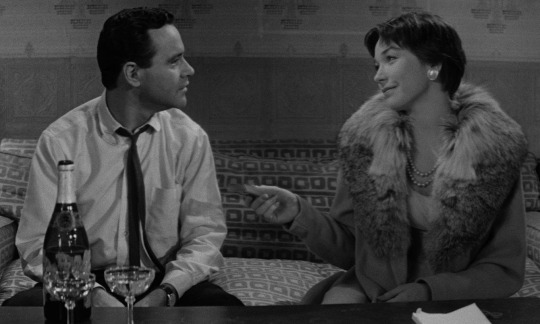



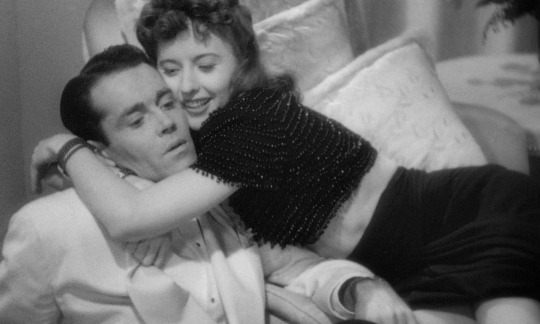
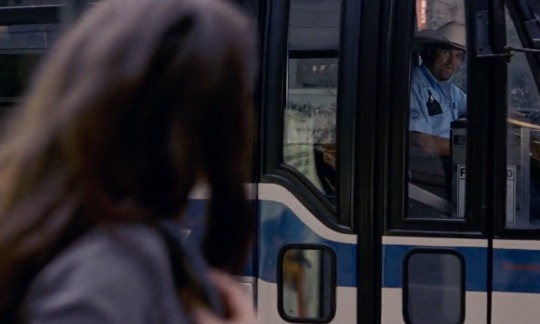




ten favorite first watches of 2023, in alphabetical order: the apartment (1960), babylon (2022), in the cut (2003), killers of the flower moon (2023), the lady eve (1941), margaret (2011), the misfits (1961), psycho (1960), sunset boulevard (1950), vertigo (1958)
honorable mentions under the cut

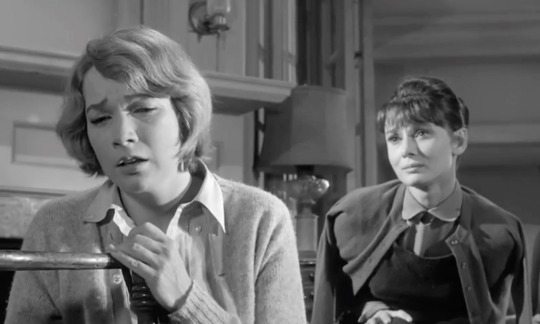
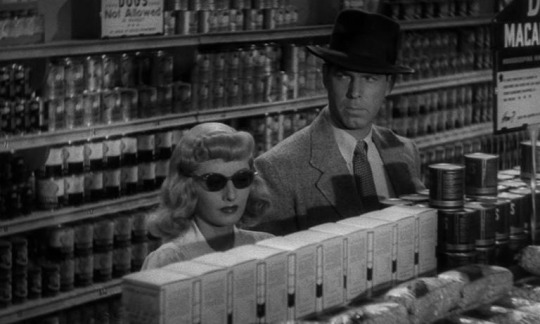
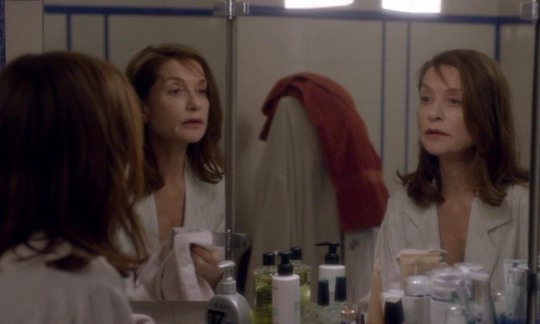


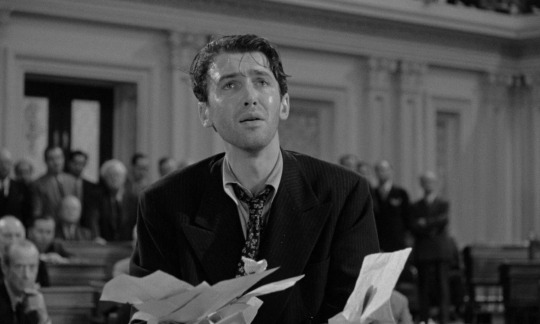
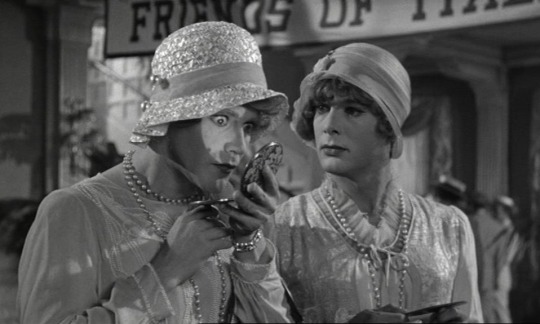
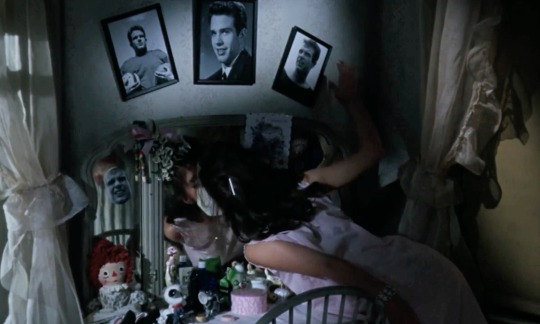

black christmas (1974), the children's hour (1961), double indemnity (1944), elle (2016), it happened one night (1934), melancholia (2011), mr. smith goes to washington (1939), some like it hot (1959), splendor in the grass (1961), tár (2022)
#doesn't feel as revelatory as last year idk i think bc i stopped watching so many movies over the summer#anyway here's to next year!#fave first watches#film#*
7 notes
·
View notes
Text

I’ve been thinking about lately how ill-equipped Percy Blakeney is for a life beyond the French Revolution and how, despite later conflicts under the rise of Napoleon, the French Revolution (certainly The Reign of Terror) is an incredibly short period. The way Orczy writes about the French Revolution through her serial novels, which followed the success of “The Scarlet Pimpernel,” implies a more drawn-out conflict and, therefore, a longer, more drawn-out period of vigilante heroism on Percy’s part. However, historically speaking, that’s not true. When France reverts to a kind of monarchy, what does Percy do?
I once posited to a friend of mine that the real spirit of The Scarlet Pimpernel is not about aristocracy but instead protecting refugees. I argued that the work of The Scarlet Pimpernel points out the hypocrisy of claiming “liberty, fraternity, and equality” for all men while persecuting some men (and women and children) and that, if alive and operating today, The Scarlet Pimpernel would operate in places where similar atrocities occurred. I remember this conversation as one of the last with that friend, in no small part because she claimed she did not want to politicize literature. I think Leslie Howard, who directed and starred in “Pimpernel Smith” and who played Sir Percy in the 1934 film, would readily agree with me. He reimagined Sir Percy as Horatio Smith, a man who freed inmates from concentration camps, in a film released in 1941. If it is so easy to see where The Scarlet Pimpernel might work his will in the 20th century, the question becomes where would he go as the 18th century faded into the early 19th century?
I once read the “biography” of Percy Blakeney. I remember that he and Marguerite have two children, and I know little else of what Orczy imagined Percy Blakeney doing after the conclusion of the French Revolution. Knowing that she continued to publish novels until 1940 always makes me think that she understood the melodrama of her work and the popularity of her characters but it also makes me wonder why (and how) she limited herself predominantly to writing about the French Revolution. I know “The First Sir Percy” exists, but he’s not who I’m interested in. I am fascinated as to why Percy Blakeney’s original author never explored the ennui he must have felt when the Revolution ended and how that must have conflicted with his humanitarian nature, which would have been glad to see the war was over. I wonder why she didn’t explore other conflicts for him to take up arms in or why we never learn what his children must have thought of their father’s stories (if he ever told them stories). With the Revolution behind them, could Percy be a devoted husband in the mundane ways life demands a spouse to be, or did he only ever know how to show love through large acts of devotion? I suppose not many people looking at adventure novels want to read about domesticity but would Percy want to be domestic? If he was dissatisfied with it, what would an active character like Percy do to change his lot in life? What about Marguerite? Would she want to be included in the next round of adventures, or would she be happy maintaining the Blakeneys’ home and reputation?
I once read a charming fanfiction wherein an older Sir Percy and Lady Blakeney meet the newly married Elizabeth and Mr. Darcy in an inn. It’s the only time I’ve been content with something that depicts Percy Blakeney as retired. Whenever I’ve set out to write him, I’ve wanted to explore the restlessness of retirement or else give him a new task. It’s why my Fae verse for Percy began in the first place: reimagining him and the League as Fae vigilantes allowed me to traverse time and space with the same, wild characters I fell in love with, with some added pizazz.
Returning to writing Percy Blakeney this week has made me remember the questions I asked, which led me to create my original character: Percy Brightstar. Like his namesake and predecessor, Percy Brightstar is an adventurer; unlike Percy Blakeney, however, he is tied to the world not only for adventure’s sake nor only to make large-scale changes. He is a brother and father and friend and lover. He is more practical with a similar set of skills. He is so divorced from Percy Blakeney that I thought I could not return to the latter. I was happily proven wrong. Still, the questions remain: who is Percy Blakeney without the French Revolution?
I don’t know yet. I’ll be delighted to see what comes next in this writing journey.
#ch: percy blakeney#hc: percy blakeney#x. told by an idiot | out of character#war tw#((I have a lot of half-formed thoughts))#((I feel very vague and soft about both Percy Blakeney and Percy Brightstar))
7 notes
·
View notes
Text
The Best Movies
These are the movies that appealed to a large audience and had wide social impact to 1) inform, 2) educate, and 3) entertain. More movies may be added or any movie may be taken out of the list at anytime.
Intolerance (1916, Griffith)
The Gold Rush (1925, Chaplin)
The General (1926, Bruckman, Keaton)
Sunrise: A Song of Two Humans (1927, Murnau)
City Lights (1931, Chaplin)*
Duck Soup (1933, McCarey)
King Kong (1933)
It Happened One Night (1934, Capra)*
A Night at the Opera (1935, Wood, Goulding)
Top Hat (1935, Sandrich)*
Modern Times (1936, Chaplin)
Swing Time (1936, Stevens)
Snow White and the Seven Dwarfs (1937, Cottrell, Hand, Jackson, Morey, Pearce, Sharpsteen)
Bringing Up Baby (1938, Hawks)
Gone With the Wind (1939, Fleming, Cukor, Wood)*
Mr. Smith Goes To Washington (1939, Capra)
Ninotchka (1939, Lubitsch)
The Rules of the Game (1939, Renoir)*
The Wizard of Oz (1939, Fleming)*
Rebecca (1940, Hitchcock)
The Grapes of Wrath (1940, Ford)
The Great Dictator (1940, Chaplin)
The Philadelphia Story (1940)
Citizen Kane (1941, Welles)*
Sullivan’s Travels (1941)
The Maltese Falcon (1941, Huston)
Casablanca (1942, Curtiz)*
Yankee Doodle Dandy (1942, Curtiz)
Double Indemnity (1944, Wilder)*
Mildred Pierce (1945, Curtiz)
It’s a Wonderful Life (1946, Capra)*
Notorious (1946, Hitchcock)
The Best Years of Our Lives (1946)*
The Big Sleep (1946, Hawks)
Out of the Past (1947, Tourneur)
Red River (1948, Hawks, Rosson)
Rope (1948, Hitchcock)
The Treasure of the Sierra Madre (1948, Huston)
All About Eve (1950, Mankiewicz)*
Sunset Boulevard (1950, Wilder)*
A Streetcar Named Desire (1951, Kazan)*
Strangers on a Train (1951, Hitchcock)*
The African Queen (1951, Huston)*
High Noon (1952, Finnemann)
Singin’ in the Rain (1952, Donen, Kelly)*
The Quiet Man (1952, Ford)
Roman Holiday (1953, Wyler)
Shane (1953, Stevens)
Stalag 17 (1953, Wilder)
Tokyo Story (1953, Ozu)
Dial M for Murder (1954, Hitchcock)
On The Waterfront (1954, Kazan)*
Rear Window (1954, Hitchcock)
The Night of the Hunter (1955, Laughton)
The Searchers (1956, Ford)*
12 Angry Men (1957, Lumet)
Funny Face (1957, Donen)*
Sweet Smell of Success (1957, Mackendrick)
The Bridge on the River Kwai (1957, Lean)
Witness for the Prosecution (1957, Wilder)
Touch of Evil (1958, Welles, Keller)
Vertigo (1958, Hitchcock)*
Ben-Hur (1959, Wyler)
North by Northwest (1959, Hitchcock)*
Some Like It Hot (1959, Wilder)*
La Dolce Vita (1960, Fellini)*
Psycho (1960, Hitchcock)*
Spartacus (1960, Kubrick)
The Apartment (1960, Wilder)
West Side Story (1961, Robbins, Wise)
Jules and Jim (1962, Truffaut)*
Lawrence of Arabia (1962, Lean)*
To Kill a Mockingbird (1962, Mulligan)*
8 1/2 (1963, Fellini)*
Hud (1963, Ritt)
The Great Escape (1963, Sturges)
Dr. Strangelove, Or: How I Learned To Stop Worrying and Love The Bomb (1964, Kubrick)*
For a Few Dollars More (1965, Leone)
The Sound of Music (1965, Wise)
The Good, The Bad and The Ugly (1966, Leone)
Who’s Afraid of Virginia Woolf? (1966, Nichols)
Bonnie and Clyde (1967, Penn)*
In The Heat of the Night (1967, Jewison)
The Graduate (1967, Nichols)*
2001: A Space Odyssey (1968, Kubrick)*
Oliver! (1968, Reed)
Once Upon a Time in the West (1968, Leone)
Butch Cassidy and the Sundance Kid (1969, Hill)
Easy Rider (1969, Hopper)
Midnight Cowboy (1969, Schlesinger)
The Wild Bunch (1969, Peckinpah)
MASH (1970, Altman)
The Conformist (1970, Bertolucci)*
A Clockwork Orange (1971, Kubrick)
The French Connection (1971, Friedkin)
The Last Picture Show (1971, Bogdanovich)
Cabaret (1972, Fosse)
Jeremiah Johnson (1972, Pollack)
The Godfather (1972, Coppola)*
American Graffiti (1973, Lucas)
The Sting (1973, Hill)
Chinatown (1974, Polanski)*
The Godfather Part II (1974, Coppola)*
Jaws (1975, Spielberg)
Nashville (1975, Altman)*
One Flew Over The Cuckoo’s Nest (1975, Forman)
All The President’s Men (1976, Pakula)
Network (1976, Lumet)
Rocky (1976, Avildsen)
Taxi Driver (1976, Scorsese)*
Annie Hall (1977, Allen)*
Star Wars: Episode IV - A New Hope (1977, Lucas)
The Deer Hunter (1978, Cimino)*
Apocalypse Now (1979, Coppola)*
Manhattan (1979, Allen)
Ordinary People (1980, Redford)
Raging Bull (1980, Scorsese)*
Raiders of the Lost Ark (1981, Spielberg)
Blade Runner (1982, Scott)*
Diner (1982, Levinson)*
E.T. The Extra-Terrestrial (1982, Spielberg)
Sophie’s Choice (1982, Pakula)
Tootsie (1982, Pollack)
Once Upon a Time in America (1984, Leone)
Platoon (1986, Stone)
Full Metal Jacket (1987, Kubrick)
Do The Right Thing (1989, Lee)
Glory (1989, Zwick)
Goodfellas (1990, Scorsese)*
Beauty and the Beast (1991, Trousdale, Wise)
The Silence of the Lambs (1991, Demme)
A River Runs Through It (1992, Redford)
Unforgiven (1992, Eastwood)
Farewell My Concubine (1993, Chen)
Schindler’s List (1993, Spielberg)*
Forrest Gump (1994, Zemeckis)
Pulp Fiction (1994, Tarantino)
The Lion King (1994, Allers, Minkoff)
The Shawshank Redemption (1994, Darabont)
Heat (1995, Mann)
Toy Story (1995, Lasseter)
Life Is Beautiful (1997, Benigni)
L.A. Confidential (1997, Hanson)
Titanic (1997, Cameron)
Saving Private Ryan (1998, Howard)*
The Sixth Sense (1999, Shyamalan)
Crouching Tiger, Hidden Dragon (2000, Lee)
Gladiator (2000, Scott)
A Beautiful Mind (2001, Howard)
The Lord of the Rings: The Fellowship of the Ring (2001, Jackson)
City of God (2002, Meirelles
The Pianist (2002, Polanski)
Finding Nemo (2003, Stanton, Unkrich)
Mystic River (2003, Eastwood)
The Incredibles (2004, Bird)
Million Dollar Baby (2004, Eastwood)
Pan’s Labyrinth (2005, del Torro)*
The Lives of Others (2006, Donnersmarck)*
No Country For Old Men (2007, Coen, Coen)
Gran Torino (2008, Eastwood)
Slumdog Millionaire (2008, Boyle, Tandan)
The Hurt Locker (2008, Bigelow)
The King’s Speech (2010, Hooper)
The Artist (2011, Hazanavicius)
* Disclaimer: Strong sexual and/or violent content not recommended below age 16. Personal discretion or parental guidance advised.+
15 notes
·
View notes
Photo






"Respect for each other as individuals, that's what counts. To always tell the truth, no matter what the consequences."
Carole Lombard and Robert Montgomery in Mr. & Mrs. Smith (1941) dir. Alfred Hitchcock
#mr. and mrs. smith#mr. & mrs. smith (1941)#carole lombard#robert montgomery#filmedit#classicfilmedit#oldhollywoodedit#old hollywood#vintage#vintagedit#jp=2#*mrandmrsmith
202 notes
·
View notes
Text



2 notes
·
View notes
Photo
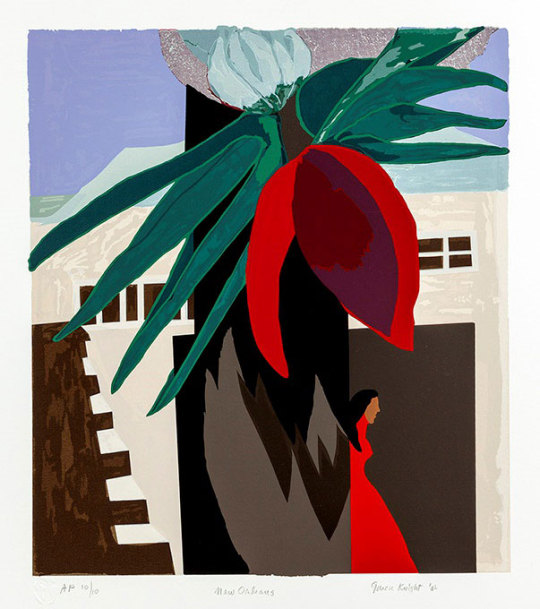
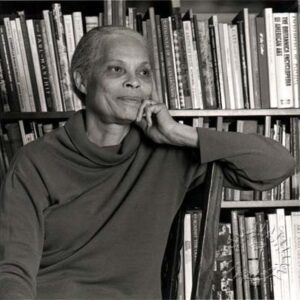
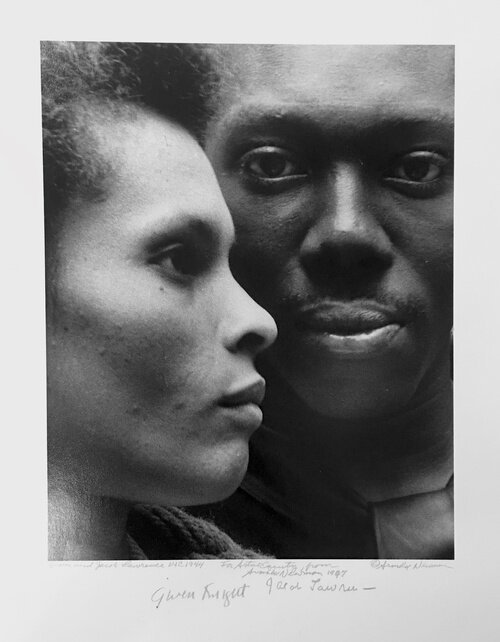

Gwendolyn Knight, New Orleans
Silkscreen on paper
Support size: 22 x 20 inches; Image size: 16 1/2 x 14 1/2 inches 2002
Gwendolyn Knight (1913 – 2005) was an American artist who was born in Bridgetown, Barbados in the West Indies. Knight met Jacob Lawrence in 1934 while they were art students in Harlem, NY and they married in 1941. Throughout their 59 year marriage, Knight and Lawrence were each other’s most valued critic. Knight attended Wadleigh High School, one of the few integrated schools in New York and one with a reputation for good scholarship. She study painting in New York under Augusta Savage, and her first formal study of art came at Howard University, where she studied with the painter Lois Maillou Jones and with printmaker James Lesesne Wells. Like Jacob Lawrence, throughout her career Gwen Knight remained unswayed by abstract expressionism and other trends that moved through the art world.
Though she shared Lawrence’s interest in figuration, her method was more spontaneous and her subject matter more personal. She charted her own creative path in a characteristically independent way. A lifelong artist, Knight supported Jacob’s career, and chose not to participate in art exhibits until 1967. That year, her work was included in “Portrayal of the Negroes in American Painting,” at the Forum Gallery in New York, along with works by Hughie Lee-Smith, Raymond Saunders, Ernest Crichlow, and Jacob Lawrence. In 1971, when Jacob was offered a full-time tenured position at the University of Washington, they moved to Seattle. Knight’s first retrospective was put on when she was nearly 90 years old (“Never Late for Heaven: The Art of Gwen Knight,” at the Tacoma Art Museum, 2003)
In Seattle, Gwen Knight Lawrence became an active member of the cultural community, serving on committees of the Urban League and the Seattle Chapter of the Links, as a member of the King County Arts Commission, and on numerous arts panels and juries. A few years after moving to Seattle, she joined the Francine Seders gallery, which also represented Jacob Lawrence. Knight’s first solo exhibition was at the Seattle Art Museum in 1976. From the mid-1970s onward, her work gained a growing audience and recognition in the Northwest and beyond, with exhibits in venues in Georgia, Oregon, and Washington, D.C. Ms. Knight continued working until 2001, turning in her late work to a series of lyrical mono-prints that captured her interest in improvisation and movement.
During the course of her career, she received many awards, including the National Honor Award, and two honorary doctorate degrees. In 2003, a retrospective of her work appeared at the Tacoma Art Museum and at DC Moore Gallery in New York City, which represents both Ms. Knight and Mr. Lawrence. Gwendolyn Knight Lawrence died in Seattle on February 18, 2005 at the age of 92. Artist Statement “I am not an innovator or an artist concerned with intellectual process I don’t rely on external definitions of success or with the mastery of an other-defined program. I paint for my own pleasure, for the connection it affords to creative life.”
https://eandsgallery.com/product-category/gwen-knight/
12 notes
·
View notes
Text

Coretta Scott was the third of four children born to Obadiah "Obie" Scott (1899–1998) and Bernice McMurry Scott (1904–1996) in Marion, Alabama.
She was born in her parents' home with her paternal great-grandmother Delia Scott, a former slave, presiding as midwife.
Coretta's mother became known for her musical talent and singing voice. As a child Bernice attended the local Crossroads School and only had a fourth grade education. Bernice's older siblings, however, attended boarding school at the Booker T. Washington founded Tuskegee Institute. The senior Mrs. Scott worked as a school bus driver, a church pianist, and for her husband in his business ventures. She served as Worthy Matron for her Eastern Star chapter and was a member of the local Literacy Federated Club.
Obie, Coretta's father, was the first black person in their neighborhood to own a truck. Before starting his own businesses he worked as a fireman. Along with his wife, he ran a barber shop from their home and later opened a general store. He also owned a lumber mill, which was burned down by white neighbors after Scott refused to sell his mill to a white logger.
Her maternal grandparents were Mollie (n��e Smith; 1868 - d.) and Martin van Buren McMurry (1863 - 1950) - both were of African-American and Irish descent. Mollie was born a slave to plantation owner Jim Blackburn and Adeline (Blackburn) Smith.
Coretta's maternal grandfather, Martin, was born to a slave of Black Native American ancestry, and her white master who never acknowledged Martin as his son. He eventually owned a 280-acre farm.
Because of his diverse origins, Martin appeared to be White; however, he displayed contempt for the notion of passing. As a self-taught reader with little formal education, he is noted for having inspired Coretta's passion for education.
Coretta's paternal grandparents were Cora (née McLaughlin; 1876 - 1920) and Jefferson F. Scott (1873 - 1941). Cora passed away before Coretta's birth. Jeff Scott was a farmer and a prominent figure in the rural black religious community; he was born to former slaves Willis and Delia.
Coretta Scott's parents intended for all of their children to be educated. Coretta quoted her mother as having said, "My children are going to college, even if it means I only have but one dress to put on."
#coretta scott king#her family#descendants#read about her#black history#african american history#knowledge is power
5 notes
·
View notes
Video
youtube
All ALFRED HITCHCOCK CAMEOS in his Movies The Lodger: A Story of the London Fog (1927), The Ring (1927), Easy Virtue (1928), Blackmail (1929), Murder! (1930), Number Seventeen (1932), The Man Who Knew Too Much (1934), The 39 Steps (1935), Sabotage (1936), Young and Innocent (1937) - The Girl Was Young (1937), The Lady Vanishes (1938), Rebecca (1940), Foreign Correspondent (1940), Mr. & Mrs. Smith (1941), Suspicion (1941), Saboteur (1942), Shadow of a Doubt (1943), Lifeboat (1944), Spellbound (1945), Notorious (1946), The Paradine Case (1947), Rope (1948), Under Capricorn (1949), Stage Fright (1950), Strangers On A Train (1951), I Confess (1953), Dial M for Murder (1954), Rear Window (1954), To Catch A Thief (1955), The Trouble With Harry (1955), The Man Who Knew Too Much (1956), The Wrong Man (1956), Vertigo (1958), North By Northwest (1959), Psycho (1960), The Birds (1963), Marnie (1964), Torn Curtain (1966), Topaz (1969), Frenzy (1972), Family Plot (1976)
5 notes
·
View notes
Text
Thursday, January 16, 1941 (Phyllis)

We started a collection for Mr. Smith's baby. I am in charge of funds.
2 notes
·
View notes